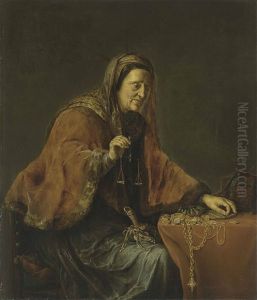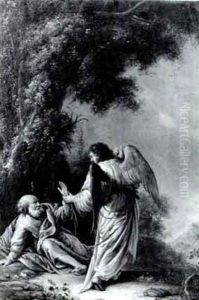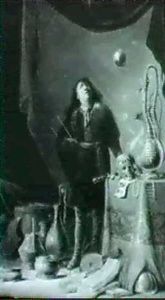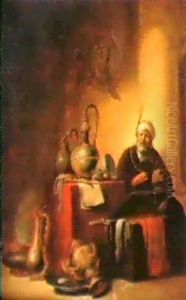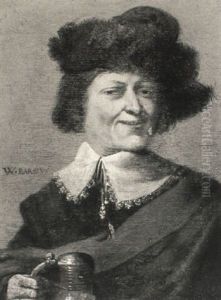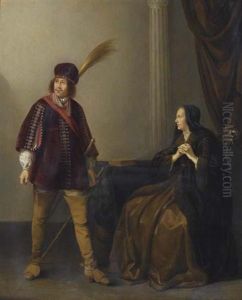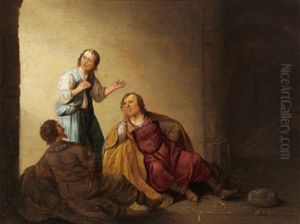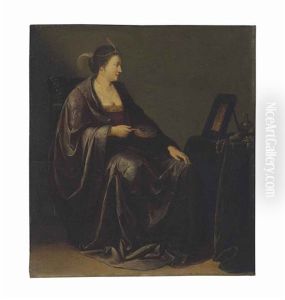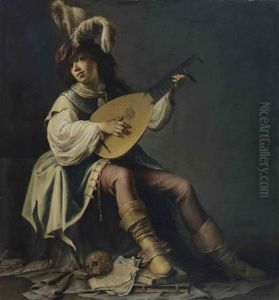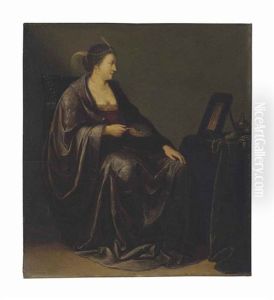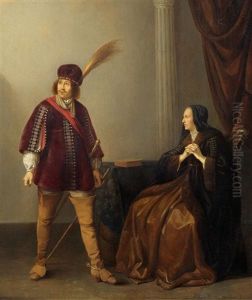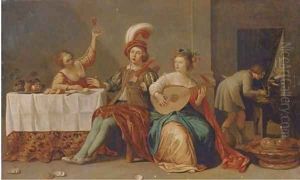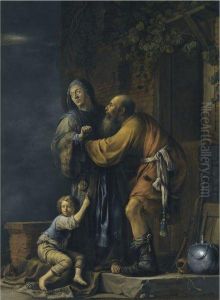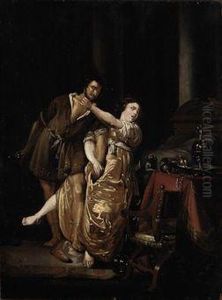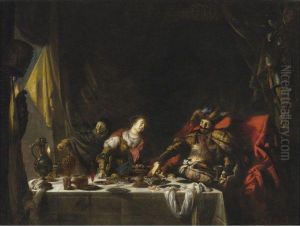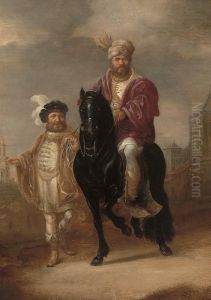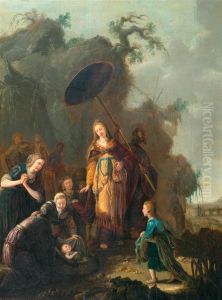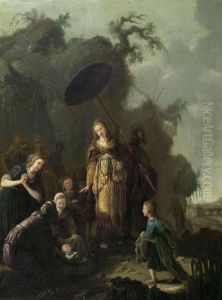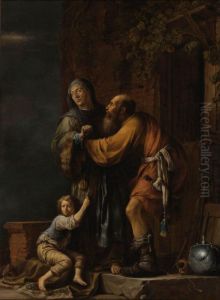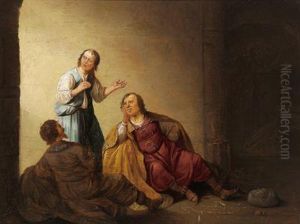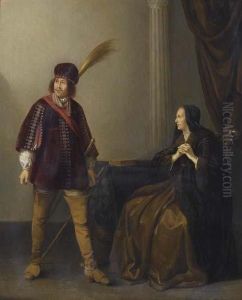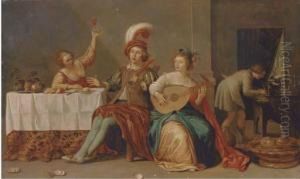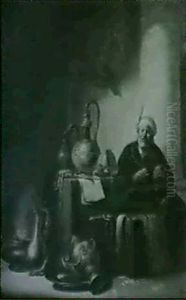Willem Bartsius Paintings
Willem Bartsius was a Dutch Golden Age painter known for his contributions to the genres of portrait and history painting. Born in Enkhuizen, Netherlands, in 1612, Bartsius was active during a period that is often considered the pinnacle of Dutch painting, when artists such as Rembrandt and Vermeer were also producing their masterworks. However, compared to these contemporaries, Bartsius remains a lesser-known figure, and details about his life are relatively scant.
Bartsius's early life and training are not well documented, but he likely received his artistic education in the Netherlands, which was a hub for artistic development at the time. By the 1630s, he had established himself as a professional artist. His style was influenced by the prevailing Baroque trends of the period, characterized by dramatic lighting, rich colors, and a strong sense of movement and emotion in the subjects portrayed.
Throughout his career, Bartsius produced works that were primarily commissioned by local patrons. His portraits often depicted members of the Dutch middle class, including merchants, scholars, and clerics, reflecting the socio-economic context of the Republic where a rising bourgeoisie was gaining prominence and could afford to commission artworks.
In addition to portraits, Bartsius also painted historical and biblical scenes. These works were marked by their attention to detail and narrative clarity, features that were highly valued in Dutch history painting of the time. His historical paintings often featured grand scenes with multiple figures and a focus on pivotal moments, imbuing them with a sense of drama and importance.
Willem Bartsius passed away in 1657. His legacy is preserved through the paintings that survive him, which continue to provide insight into the artistic and cultural climate of 17th-century Netherlands. However, his oeuvre has not been studied as extensively as that of his more famous peers, and therefore, he remains a somewhat obscure figure in the canon of Dutch Golden Age artists. Despite this, his contributions to the portrait and history painting genres of his time remain significant and are appreciated by art historians and enthusiasts alike.
